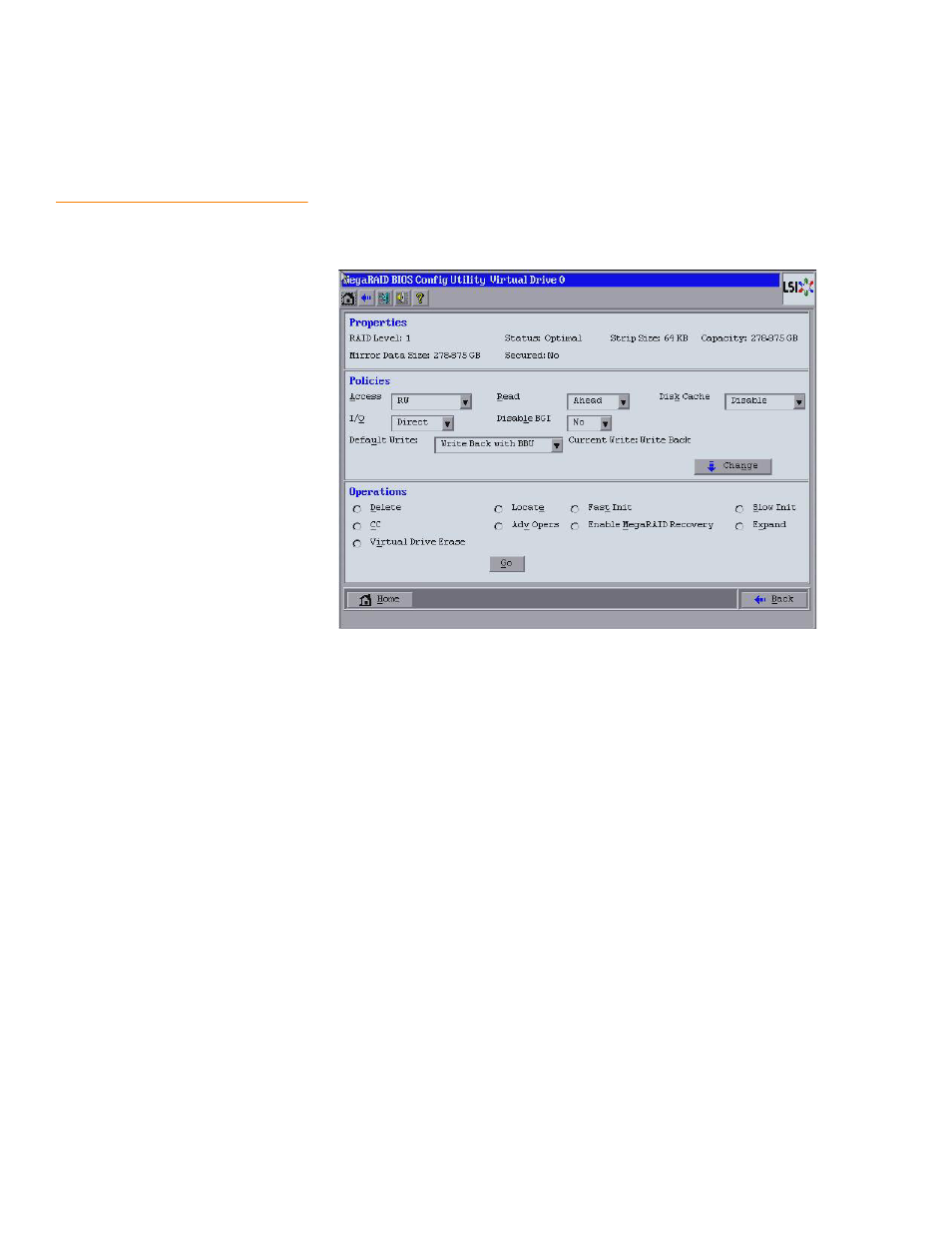Section 4.8.2, viewing, Virtual drive properties, policies, and operations – Avago Technologies MegaRAID Fast Path Software User Manual
Page 149

LSI Corporation Confidential
|
July 2011
Page 149
MegaRAID SAS Software User Guide
Chapter 4: WebBIOS Configuration Utility
|
Viewing and Changing Device Properties
4.8.2
Viewing Virtual Drive
Properties, Policies, and Operations
WebBIOS displays properties, policies, and operations for virtual drives.
To view these items for the currently selected virtual drive, click on a virtual drive icon
in the right panel on the WebBIOS Configuration utility main dialog.
The Virtual Drive dialog appears, as shown in
.
Figure 97:
Virtual Drive Dialog
The Properties panel of this dialog displays the virtual drive’s RAID level, state, capacity,
strip size, and metadata size.
The Policies panel lists the virtual drive policies that were defined when the storage
configuration was created. For information about these policies, see
To change any of these policies, make a selection from the
drop-down list and click Change.
The Operations panel lists operations that can be performed on the virtual drive. To
perform an operation, select it, and click Go. Choose from the following options:
Select Delete to delete this virtual drive. For more information, see
.
Select Locate to make the LEDs blink on the drives used by this virtual drive. This
action works only if the drives are installed in a drive enclosure that supports
SCSI-Accessed-Fault-Tolerant-Enclosure (SAFTE).
Select Fast Init or Slow Init to initialize this virtual drive. A fast initialization quickly
writes zeroes to the first and last 10-MB regions of the new virtual drive and then
completes the initialization in the background. A slow initialization is not complete
until the entire virtual drive has been initialized with zeroes. It is seldom necessary
to use this option, because the virtual drive was already initialized when you
created it.
- MegaRAID SAS 9240-4i MegaRAID SAS 9240-8i MegaRAID SAS 9260-16i MegaRAID SAS 9260-4i MegaRAID SAS 9260-8i MegaRAID SAS 9261-8i MegaRAID SAS 9280-16i4e MegaRAID SAS 9280-4i4e MegaRAID SAS 9280-8e MegaRAID SafeStore Software MegaRAID SAS 9361-4i MegaRAID SAS 9361-8i MegaRAID SAS 9266-4i MegaRAID SAS 9266-8i MegaRAID SAS 9270-8i MegaRAID SAS 9271-4i MegaRAID SAS 9271-8i MegaRAID SAS 9271-8iCC MegaRAID SAS 9286-8e MegaRAID SAS 9286CV-8e MegaRAID SAS 9286CV-8eCC MegaRAID CacheCade Pro 2.0 Software MegaRAID SAS 9341-4i MegaRAID SAS 9341-8i MegaRAID SAS 9380-8e MegaRAID SAS 9380-4i4e
